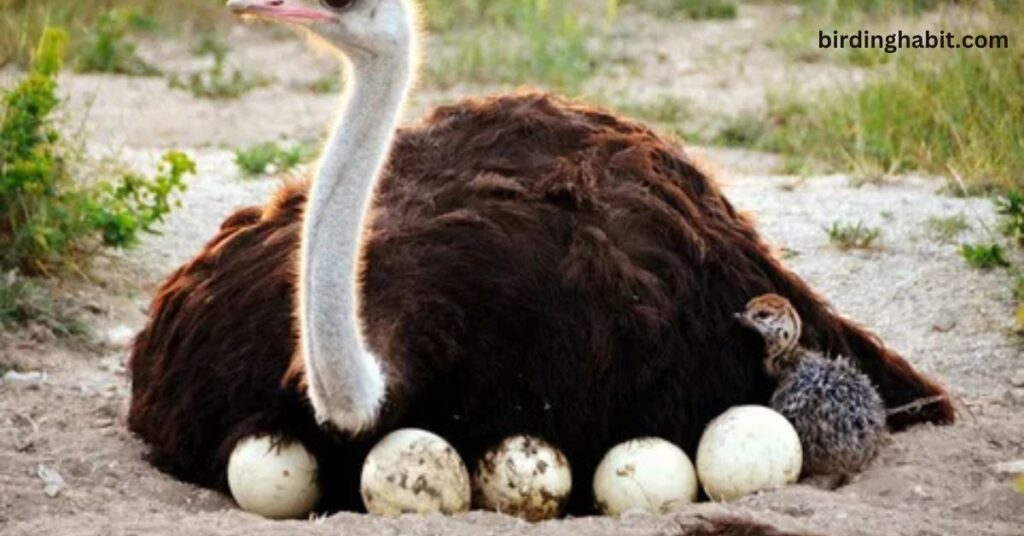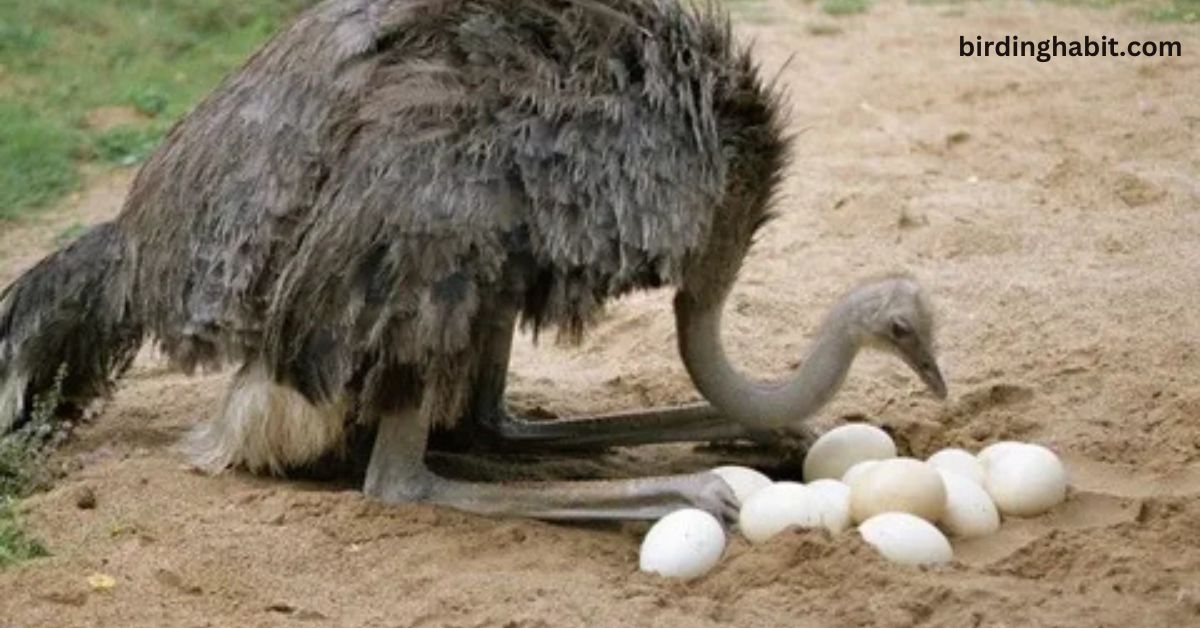Ostriches are known for many unique features — their towering height, powerful legs, and distinctive appearance.
However, one of their most fascinating traits is the size of their eggs. The ostrich lays the largest eggs of any living land animal, and these massive eggs raise an interesting question: Why do ostriches lay such large eggs?
In this article, we’ll explore the reasons behind the extraordinary size of ostrich eggs, their purpose, and how they fit into the survival and reproductive strategies of this remarkable bird.
The Basic Facts About Ostrich Eggs
Ostrich eggs are truly impressive. They can weigh up to 3 pounds (1.4 kilograms) and measure about 6 inches (15 cm) in diameter.
To put this in perspective, an ostrich egg is equivalent to around 24 chicken eggs in terms of volume. Despite their size, ostriches only lay one egg at a time, typically once every two to three days, during the breeding season.
Given that the ostrich is a flightless bird that lives in open, often harsh environments, the size of its egg is directly linked to its survival and reproductive success.
1. Larger Eggs for Larger Offspring
The size of an ostrich egg is primarily an evolutionary advantage. Larger eggs give rise to larger chicks, which have a higher chance of surviving in the wild.
When an ostrich chick hatches, it is already quite large — about 12 inches tall and weighing around 2 pounds. This initial size gives the chick the strength and endurance to survive predators and the challenges of life in the wild.
A larger egg also means more space for the developing chick to grow. Ostrich eggs have a thicker shell compared to smaller bird eggs, providing more protection during incubation and while the chick is growing inside.
2. Energy and Nutrient Requirements
One of the key reasons for the large size of ostrich eggs is the amount of energy and nutrients required by the developing chick.
Ostrich chicks, unlike those of smaller birds, need a substantial amount of stored nutrients to survive after hatching.
The yolk of an ostrich egg contains a high concentration of fats, proteins, and other essential nutrients, which the developing chick uses as fuel for growth.
The larger the egg, the more nutrients it can hold, ensuring the chick has enough resources to develop to a size capable of surviving in its environment.
This is especially important for ostriches, which live in areas with scarce resources like deserts and savannas, where food may not always be plentiful.
3. Protection Against Predators
Ostriches are vulnerable to predation, especially during their early stages of life. The size of the egg, along with the thick, durable shell, plays an important role in protecting the embryo inside from potential threats.
In the wild, eggs are often buried in the sand to keep them hidden from predators like hyenas, jackals, and birds of prey.
A large egg with a tough shell is much harder to break than smaller, fragile eggs, offering better protection for the developing chick.
Moreover, the size of the egg means fewer eggs are laid at once. Ostriches tend to lay only a few eggs per breeding season, which means there is less chance of a predator discovering and consuming all of them.
Typically, multiple females in a group will lay their eggs in the same communal nest, allowing for shared responsibility in guarding the nest and ensuring the eggs’ safety.
4. Environmental Adaptation
The large eggs of an ostrich also represent an adaptation to the bird’s environment. Ostriches are native to Africa, where they inhabit vast, open spaces with extreme temperatures.
The thick eggshell helps regulate temperature and prevents the embryo from overheating during the hot days or cooling down too much during cold nights.
Additionally, the large size of the egg helps protect the developing chick from temperature fluctuations, ensuring that the embryo stays at an optimal temperature for development.
Another interesting aspect of the ostrich’s egg is its ability to withstand harsh conditions. Ostrich eggs have a unique structure, with a tough, durable outer membrane that makes them less likely to crack under pressure.
This ability is especially vital in the wild, where they can be exposed to rough terrains and occasional attacks by predators.
5. The Role of the Male Ostrich
In the world of ostriches, the male plays an essential role in protecting and incubating the eggs. The male’s larger size and strength allow him to defend the nest more effectively than the females.
After the female lays her eggs, the male takes over the incubation process. He sits on the eggs during the night, keeping them warm, while the female guards the nest during the day. This teamwork helps to ensure the eggs are cared for at all times.
The large eggs also require a prolonged incubation period, which is around 42 days. During this time, the parents protect the nest from predators and keep the eggs at a stable temperature, which is crucial for the healthy development of the chicks inside.
6. The Role of the Male in Egg-Laying
Unlike many bird species, where the female is solely responsible for laying and incubating eggs, ostrich males play a crucial role.
The male’s role in incubating the eggs is vital to the success of the clutch. While the female ostrich lays the eggs in a communal nest, it’s the male who incubates them during the night, ensuring the eggs remain warm.
This cooperative system allows both parents to contribute to the survival of their offspring, with the male incubating the eggs at night while the female takes over during the day.
7. The Impact on Human Agriculture
Ostrich eggs have long been prized for their size and unique qualities. In some cultures, they are considered a delicacy, and their thick shells are even used for crafting intricate artwork.
Additionally, ostrich farming has become a niche industry, particularly in parts of Africa and the United States, where their eggs are used for culinary purposes and sold at premium prices.
The large size of these eggs has made them a unique offering in both the food and art markets, contributing to the value of ostrich farming beyond just meat and feathers.
Conclusion: A Strategy for Survival
The reason ostriches lay such large eggs is not by chance but a result of millions of years of evolutionary adaptation.
The size of the egg is designed to give the developing chick the best possible chance of survival. From providing essential nutrients to protecting the embryo from predators and extreme temperatures, every feature of the ostrich egg plays a role in ensuring the continuation of the species.
In nature, everything has a purpose — and the large, nutrient-packed eggs of the ostrich are a perfect example of how evolution has shaped this remarkable bird to thrive in its environment.
By laying such large eggs, ostriches increase the likelihood of their offspring reaching maturity, and in turn, the future of their species.



